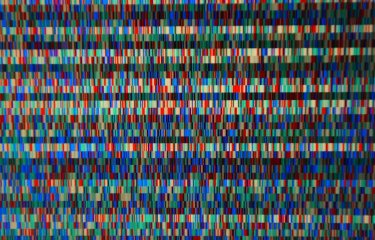Hearing impairment affects hundreds of millions of people worldwide. Researchers at the Hearing Institute have mapped at the single cell level the spatio-temporal expression of genes within the sensory organ of hearing, the cochlea, paving the way for the development of gene therapy treatments for hereditary forms of deafness.
Hearing is the most frequently affected of the five major senses. The vast majority of auditory deficits affect the cochlea, the sensory organ of hearing, and are incurable; only prostheses or hearing aids can be offered to the hearing impaired.
Today, gene therapies are now seen as a particularly promising way of treating patients with hearing impairment.. Among the strategies developed, some involve introducing a fragment of DNA (a normal copy of the defective gene) into the affected cells, with the aim of inducing production of the normal protein in order to repair or compensate for the deleterious effects of the corresponding genetic disease. Alongside these replacement therapies, other so-called editing therapies involve in situ modification of the affected copy of the gene.
The replacement strategy, by far the most developed today, requires the therapeutic gene to have a spatio-temporal expression that mimics that of the endogenous gene. This is precisely where knowledge of gene expression profiles in the cochlea is lacking, and is becoming particularly penalizing, preventing the characterization of sequences regulating cochlear gene expression - an essential step in finely regulating the expression of a therapeutic gene.
Mapping gene expression in the cochlea
In a study published June 20th in PNAS, researchers at the Hearing Institute, a center of the Institut Pasteur dedicated to auditory neuroscience research, have produced the first gene expression atlas of the mouse cochlea. "We have established the chronology of gene expression in almost 120,000 cells at three critical stages in the development of the cochlea. This has enabled us to characterize more than 30 cell types, discovering three previously unknown ones and clarifying how this organ develops and sets up its complex biophysical properties underlying the frequency analysis of the sounds it operates", describe Nicolas Michalski and Christine Petit, researchers at the Hearing Institute and co-directors of the study.
The researchers were also able to finely classify the genes involved in deafness and/or cochlear development according to their different expression profiles in the various cell types of the cochlea. "These discoveries should considerably accelerate the identification of cell types affected by pathogenic gene variants involved in deafness, enabling the development of targeted therapies aimed at restoring hearing," asserts Philippe Jean, researcher at the Hearing Institute and first author of the study.
Source
Single-cell transcriptomic profiling of the mouse cochlea: An atlas for targeted therapies, PNAS, June 20, 2023, https://doi.org/10.1073/pnas.2221744120





